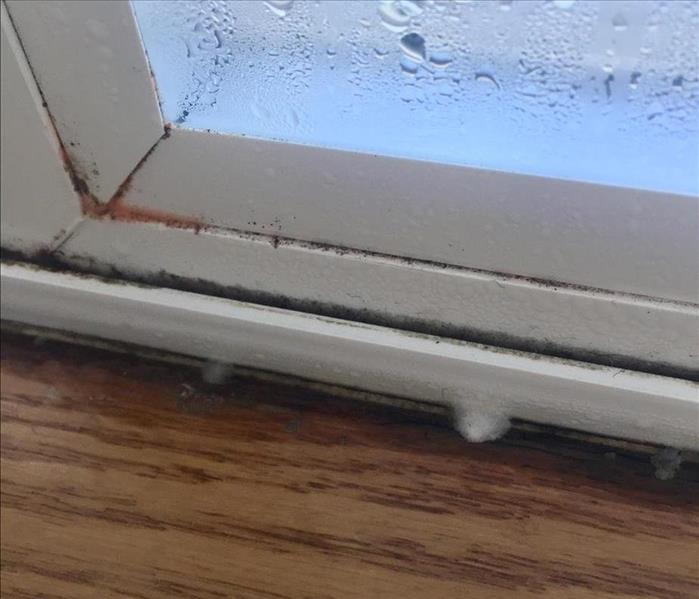Winter Windows: Condensation and Mold in New Castle, PA
3/4/2019 (Permalink)
Have you ever woken up on a chilly winter morning, looked out the window to gaze at the beautiful ice and snow... only to find that icicles have actually started to form on the inside of the glass, not just the outside?
Or perhaps if you haven't seen actual icicles, you've occasionally noticed steam accumulating on the glass, or water beads running on to the window sill.
If your windows are sealed properly, this may never have happened to you. However, this problem can be common in apartments or older homes during the winter. You may think this is just a short-lived seasonal issue, but this accumulation of water and ice inside your windows can actually lead to some damage to your home. So if you've had any of these issues this winter, this post is for you!
What's With the Water?
During the summer months, moisture on the inside of windows is not as common. In the winter season, the air on the outside of the window is typically much colder than the air on the inside. Moisture molecules in the warm inside air will get trapped, and will naturally seek cooler locations. Thus, the molecules will move to the windows of your home because of its contact with the cold exterior air. Essentially, moisture molecules accumulate on the windows because they are meeting in the middle between the cold and warm air.
So what's the big deal?
This may not seem like that big of a deal, but if this problem continues throughout the winter like it does in some homes, the repeated moisture buildup can have some not-so-nice effects.
One of these negative effects can be seen if your window sills are made of wood. Wooden sills that are repeatedly exposed to water will eventually get warped and damaged. In many cases, the moisture will be at its worst during the night, sometimes turning into ice because of nightly outdoor temperature drops. If this happens, large amounts of water can pool on the wooden sills as the ice is melted by the sun during the day. This process can be repeated daily during the winter months.
Another possible effect of repeated moisture buildup is mold. It's not nice to think about, and probably won't happen in every case. But if moisture is continually trapped in the warm, indoor air, you could start to see mold forming along the cracks and crevices of your windows.
So what can you do?
If this is happening to you, there are lots of options for solving this problem in your home.
Some of the quickest fixes are to turn up the heat in your home or run a dehumidifier to eliminate indoor moisture. Another option to consider if this is a recurring problem is to insulate your windows by using a plastic film or similar material.
There are many ways to tackle the problem of moisture on your winter windows. Be sure to keep an eye out for mold growth and try to eliminate trapped, indoor moisture.

 24/7 Emergency Service
24/7 Emergency Service
